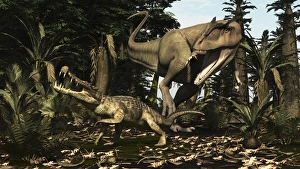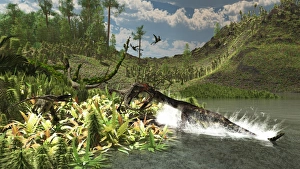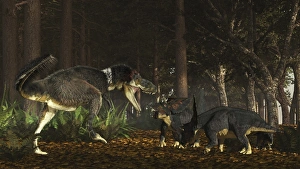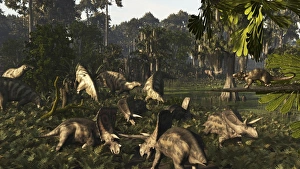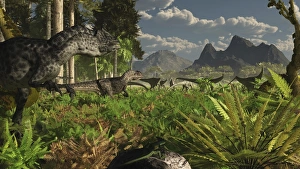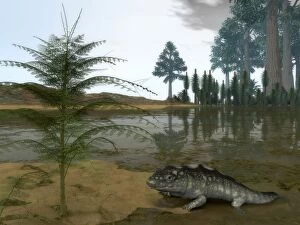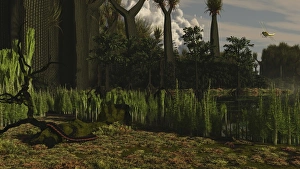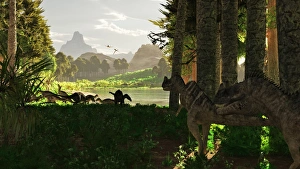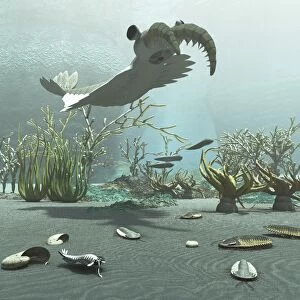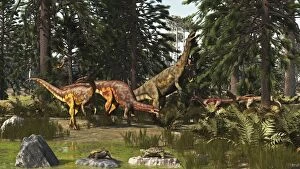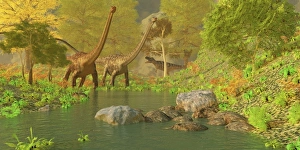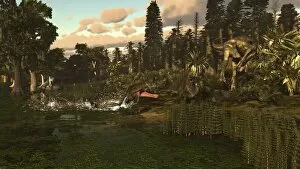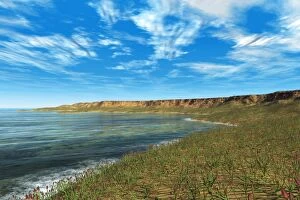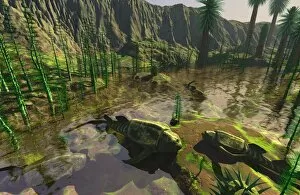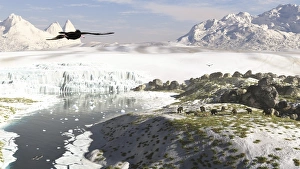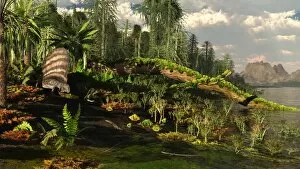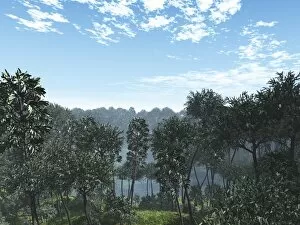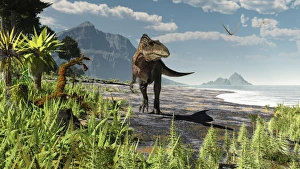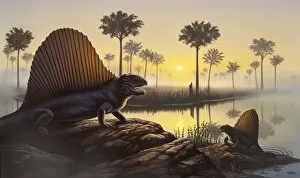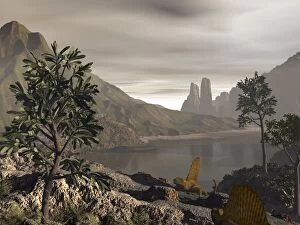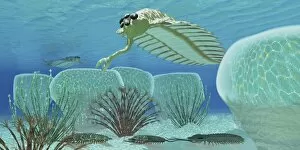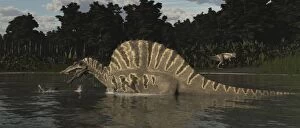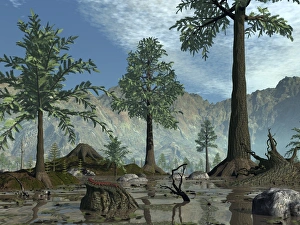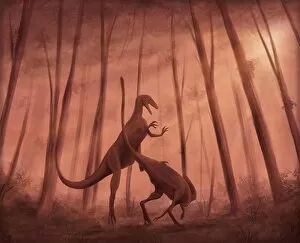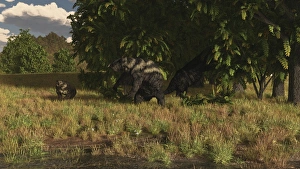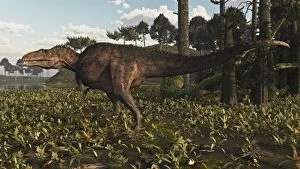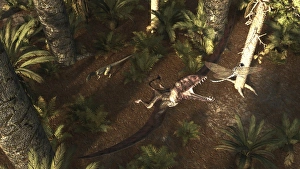Paleoecology Collection
"Paleoecology: A Glimpse into Ancient Ecosystems and Fierce Encounters" Witness the intense battle as a Postosuchus attacks a dicynodont in the dense Triassic forest
All Professionally Made to Order for Quick Shipping
"Paleoecology: A Glimpse into Ancient Ecosystems and Fierce Encounters" Witness the intense battle as a Postosuchus attacks a dicynodont in the dense Triassic forest, showcasing the predator-prey dynamics of prehistoric life. Dive deep into Cetaceous waters where a Tylosaurus strikes with deadly precision, attacking a Styxosaurus in an epic struggle for survival. In the ancient world, size mattered. Behold as a large Carcharodontosaurus launches its assault on a Kaprosuchus, highlighting the fierce competition among apex predators. Stealth meets opportunity as a Nothosaurus seizes an unware Ceolophysis, revealing nature's cunning strategies at play during this Mesozoic encounter. Prepare for an awe-inspiring confrontation as Daspletosaurus confronts an entire family of Chasmosaurus, painting vivid pictures of dinosaur social behavior within their Late Cretaceous habitat. Step back in time to the Hell Creek Formation and marvel at various dinosaurs that once roamed these lands; each species leaving behind clues about their coexistence and interactions. Immerse yourself in western North America's prehistoric landscape where Allosaurus and Diplodocus roam freely, offering glimpses into their daily lives and ecological roles. Journey through time to witness Silu-Devonian land plants with branching axes shaping prehistoric landscapes; discover how they influenced ecosystems before dinosaurs ruled supreme. As dawn breaks over ancient skies, behold the giant Meganeura with its 30-inch wingspan witnessing nature's spectacle—a sunrise that has captivated creatures throughout history. Unveil nature's relentless cycle as Inostrancevia moves in on a kill made by Doliosauriscus; this glimpse showcases both predator prowess and scavenger opportunism from Earth's past.



